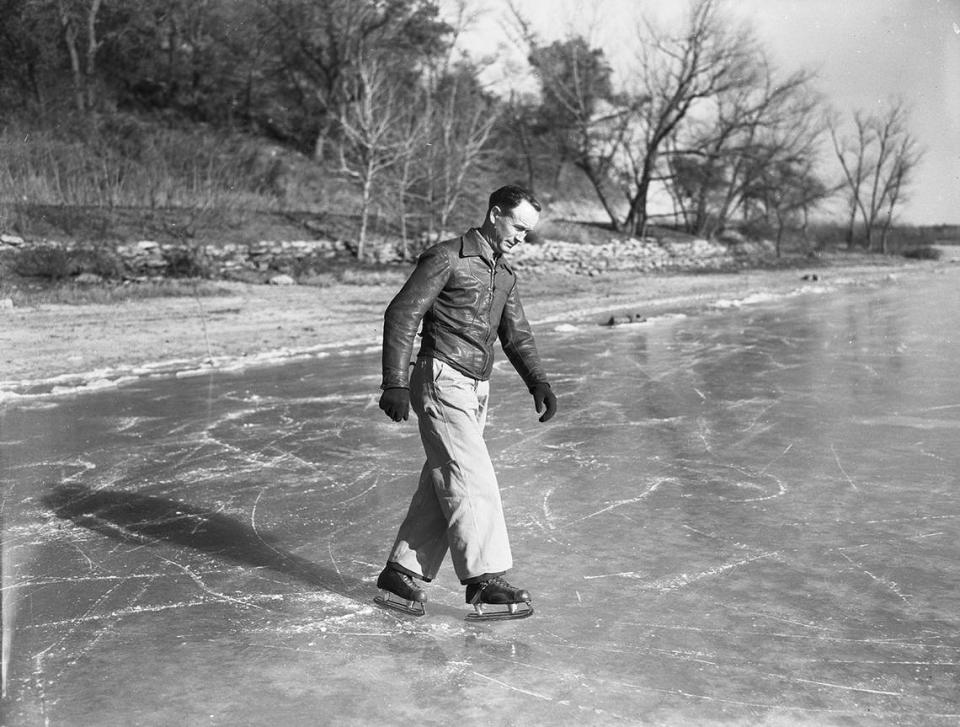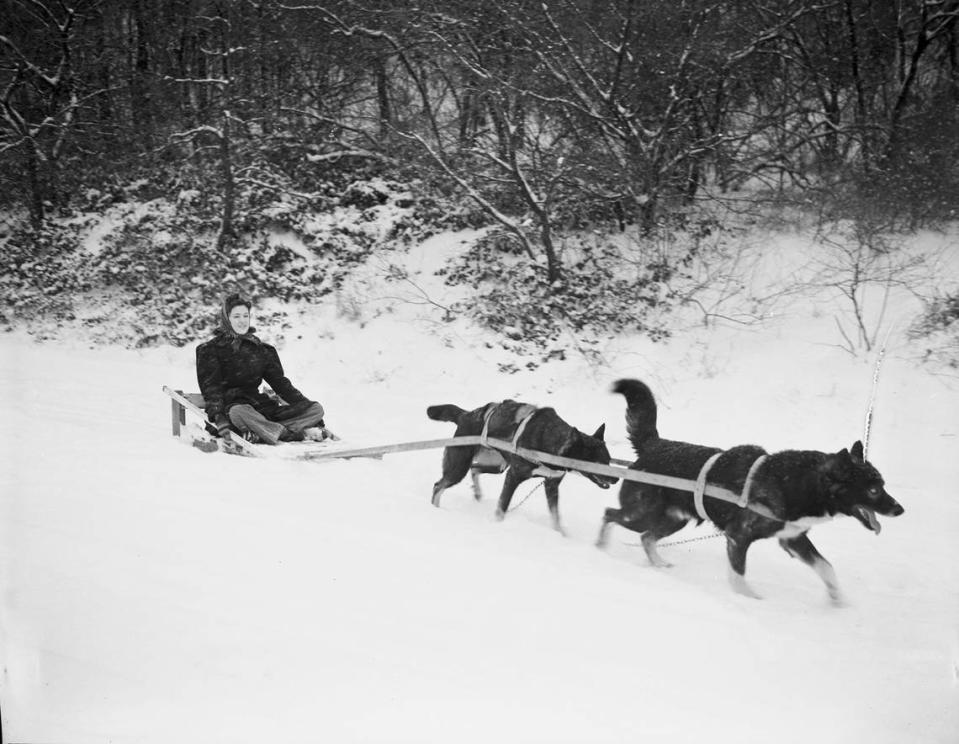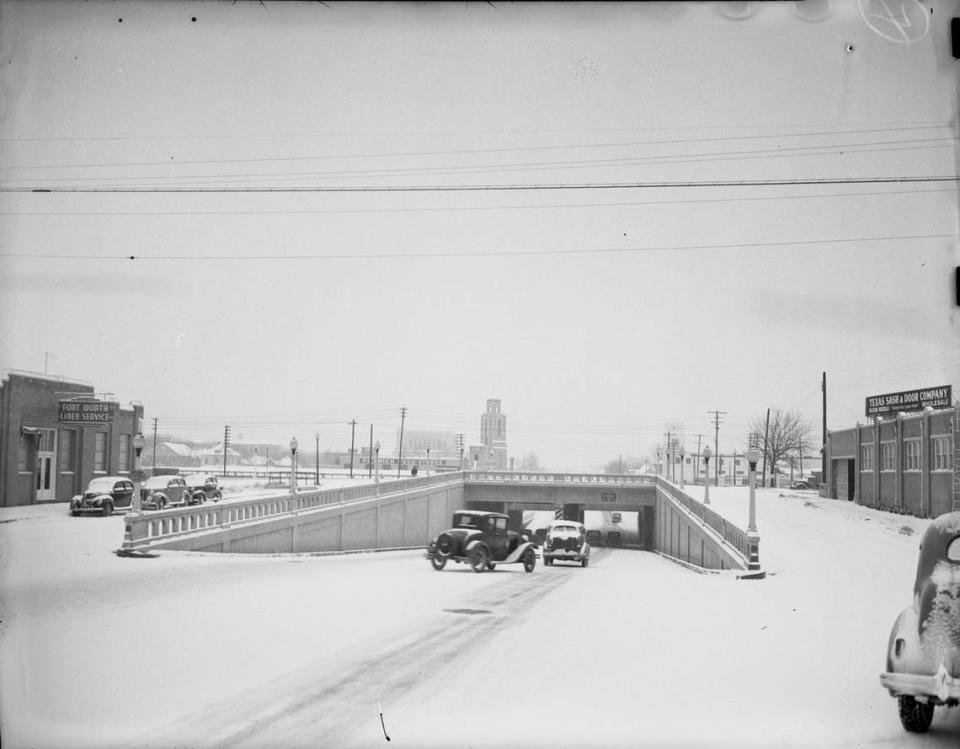Think it’s been cold in Fort Worth? In 1930, they drove cars on the Lake Worth ice
Two weeks ago, I was on an amazing National Geographic Expedition to Antarctica, where it is summertime with sunny days in the low 30s. Back home in Fort Worth, frigid temperatures from 11 to 16 degrees had paralyzed the city. I smugly chuckled at the contrast.
In Antarctica, the breeze was so mild, my husband and I kayaked around icebergs and hiked, without hats or gloves, to penguin-nesting grounds.
Ding!
Was I really receiving a text at the bottom of the globe? Yes. A digital message alerted me that 7,000 miles away in Ridglea Hills a pipe had burst at my home. A pedestrian saw a river rushing from the house into the street. He posted an alert on the neighborhood Facebook page. Recognizing the address, a friend texted me. With her help, plumbers were summoned to turn off the water. A neighbor with a house key led the plumbers indoors to survey damage from the deluge. Up to 3 inches of water was on the floor.
Wintry weather often catches Texans off guard, even though snow and ice predictably strike in January during the Stock Show. More than a century ago, on Jan. 6, 1910, when Fort Worth had a 5-inch snowfall, coal was in short supply. Horses pulling coal wagons struggled and slipped in the slush and ice. Teamsters filled coal wagons only to the halfway mark to lighten the load.
A day earlier, temperatures had soared to a balmy 79 degrees, then plummeted below freezing by 11 a.m. Icicles coated trolley wires. Snow accumulated on streetcar tracks.
Children, happy that the snow was wet enough to make great snowballs, gathered on street corners, piled up ammunition, formed teams, and let loose with bombardments. During a contentious school board meeting, protesters hurled snowballs at trustees.
Twenty years later in 1930, Lake Worth froze from shore to shore with 7-inch-thick ice. With the mercury well below freezing from Jan. 15 to 23, skaters performed figure eights day and night. Cars intentionally skidded across the glassy surface. Motorcyclists spun in circles. Ice fishing drew dozens.

Ten years later, on Jan. 19, 1940, Lake Worth again “froze solid,” the Star-Telegram reported. The first deep freeze in a decade paralyzed Texas from the Panhandle to the Gulf. In Corpus Christi, fresh vegetables, packed and ready for market, spoiled. Fort Worth firefighters carried torches to thaw ice. Car radiators froze. (Antifreeze was not commonly used until after World War II.) Engine blocks cracked.

Lake Worth again turned into a glassy sheet. This time the ice was only 2 inches thick — yet firm enough for figure skaters to perform encores. Police counted up to 500 migrating geese stuck in the lake.
The Big Freeze of ’83, from Dec. 18 to Dec. 30, 1983, was the first prolonged cold spell my family experienced. For 12 days, we were marooned at home — with out-of-town company, no less. No residential streets were sanded. City crews working 12-hour shifts were too busy repairing water mains. An average of 135 pipes a day burst. During the days before and after Christmas, shopping malls were virtually empty. The Star-Telegram launched a Water Repairman’s Appreciation Fund to award bonuses to municipal laborers doing wet work in the frigid air that blew in from the Yukon.

Ice storms in 2011 turned into a public relations disaster for the Metroplex. Super Bowl XLV at Jerry World had promised to be a showcase for the Cowboys’ $1.3 billion stadium in Arlington and the region’s Sun Belt weather. Instead, snow and ice storms canceled more than 300 flights. Sheets of ice slid off the stadium roof, injuring contractors the NFL hired to prepare the stadium for the game. Lawsuits piled up.
Dubbed a Super Mess with sub-zero windchills, vendors sold ski caps instead of cowboy hats. Sportswriters joked that Arlington could have hosted the Iditarod. The cold did not phase visiting NFL players from Pittsburgh and Green Bay, where the mercury hovered between 17 and 20 degrees. The jubilant Green Bay Packers, with a 31-25 win, fittingly returned home with the Vince Lombardi trophy.

Complaints surfaced about ERCOT — the Electric Reliability Council of Texas — which manages the state’s power grid. ERCOT exempted the stadium from rolling power blackouts, yet two Arlington hospitals were not spared and had to switch to back-up generators.
ERCOT was blamed a decade later when Arctic air masses paralyzed Texas for 10 days from Feb. 10-20, 2021. Foreshadowing the mounting catastrophe was what meteorologists dubbed “The Fort Worth Pileup” on Feb. 11. Over 130 vehicles skidding and jack-knifing on black ice crashed into one another on a half-mile, tollway stretch of Interstate 35, leading to six deaths. Statewide, power plants failed; gas production plummeted 45 percent; 3.6 million homes lost power. Property damage and deaths of at least 246 people reached a historic scale.
Tarrant County’s recent January cold snap, thankfully, can’t compare. For only three straight days, temperatures remained below freezing. City crews repaired 24 water-main breaks.
At my house, insurance will cover the damage. Neighbors and friends quickly formed a team. A water mitigation crew was at work by the time we reached Texas three days later. Social media and cell phone technology limited the damage of the deluge that swept through a swath of our home. Judged against previous winters, this January’s weather was mild.
Hollace Ava Weiner, an archivist, historian, and author, is director of the Fort Worth Jewish Archives.

